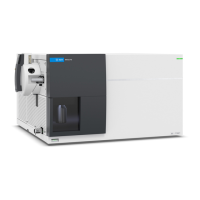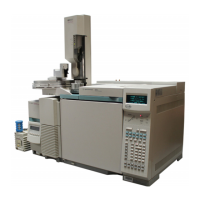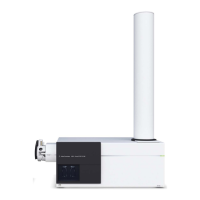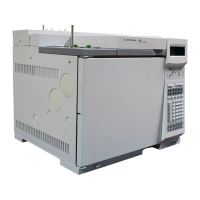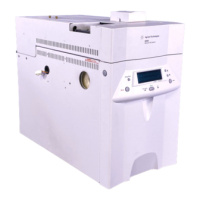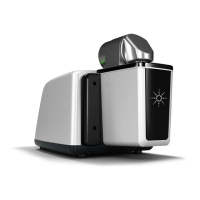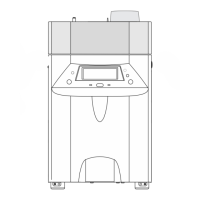20 Agilent 6400 Series Triple Quad LC/MS Concepts Guide
2 Inner Workings – Triple Quadrupole MS versus Single Quadrupole MS
How a single quadrupole mass spectrometer works
ions passing through to continue on to the mass analyzer. Even
if these ions collide with the gas molecules in this region, they
usually do not have enough energy to fragment.
CID – Collisionally Induced
Dissociation
However, as the voltage is increased, the ions have more
translational energy. Then, if the ions run into gas molecules,
the collisions convert the translational energy into molecular
vibrations that can cause the ions to fragment (Figure 6). This is
collisionally induced dissociation (CID). Even though this
fragmentation does not occur where the ions are formed at
atmospheric pressure, it’s a tradition to call this type of
fragmentation “In-source CID.”
Figure 6 Ion fragmentation caused by collision-induced dissociation
A single quadrupole mass spectrometer cannot be used to do
MS/MS because all of the ions formed in the ion source are
transferred to the quadrupole whether fragmented or not. At
the end when the mass analyzer filters the ions, it is not
possible to identify which product ions came from which
precursor ions.
A triple quadrupole mass spectrometer can do MS/MS, with
fragmentation within its collision cell as described in the next
section.
